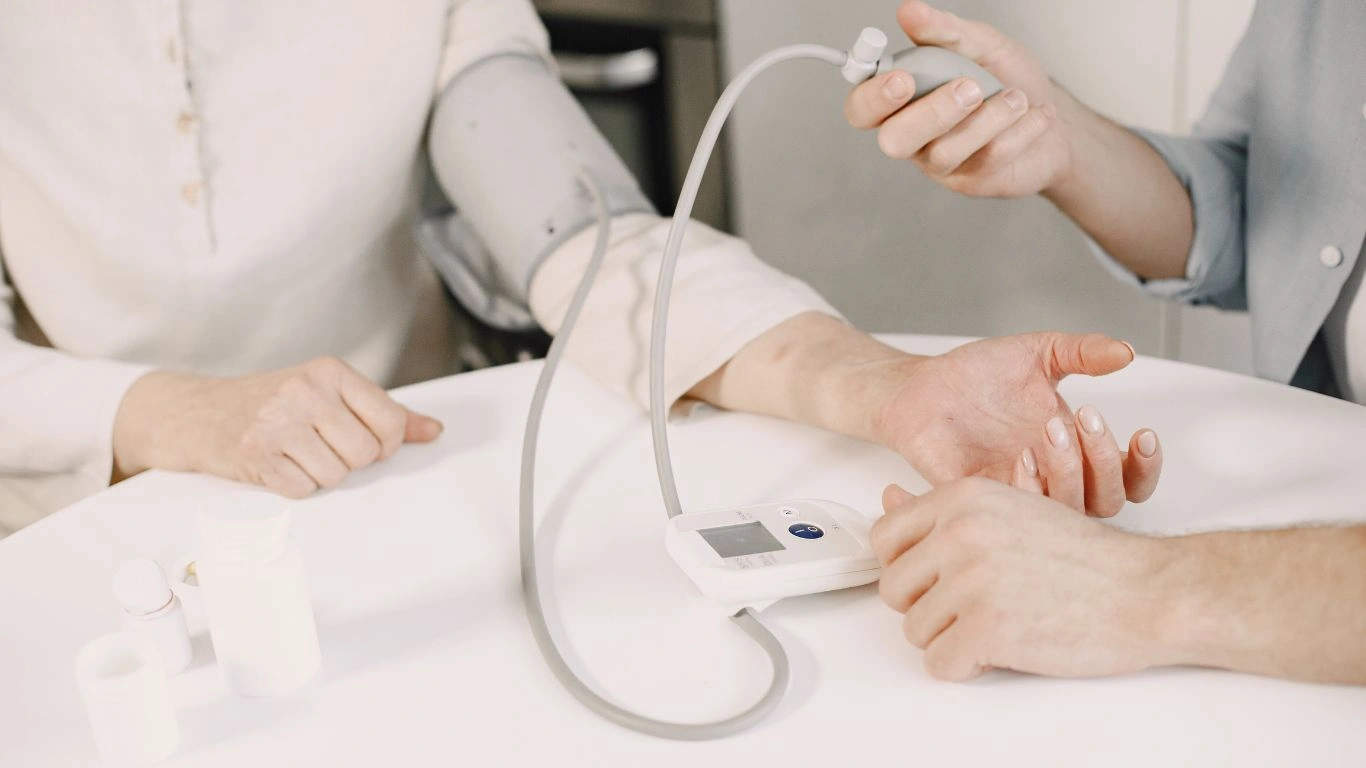Proven Strategies for Managing Hypertension After Surgery Effectively
If there’s one thing I’ve learned in my years managing patients both pre-op and post-op, it’s that managing hypertension after surgery is a whole different ball game than handling it in a typical outpatient setting. It’s not just about writing a script for an ACE inhibitor and calling it a day. The stress of surgery, fluctuating fluid status, pain, and even anxiety can send blood pressures bouncing like a yo-yo. I’ve seen patients sail through surgery only to have their recovery derailed by uncontrolled blood pressure — it’s frustrating, but entirely preventable with the right plan.
Why Blood Pressure Spikes After Surgery: It’s Not Just Stress

Most people assume that elevated blood pressure after surgery is purely stress-related. And while yes, stress plays a role, it’s often a perfect storm of multiple triggers. I’ve walked into many post-op rooms where a patient is hypertensive not because of pain or stress — but because we missed a critical piece of the puzzle.
Let’s break down what’s really going on:
- Pain: Uncontrolled pain activates the sympathetic nervous system, driving up BP.
- Fluid shifts: IV fluids, blood loss, and diuresis mess with volume status.
- Medications: Some perioperative meds — especially steroids and decongestants — raise BP.
- Missed doses: Patients often skip their usual antihypertensives before surgery — sometimes for good reason, sometimes not.
- Sleep disruption: Hospitals aren’t exactly known for peaceful sleep. That matters more than you think.
One patient I’ll never forget — let’s call her Mrs. Thompson — came in for a straightforward laparoscopic cholecystectomy. Healthy overall, but with a long-standing history of hypertension. We held her lisinopril the morning of surgery (standard protocol), but didn’t restart it until day three post-op. By then, her BP had been running in the 170s. Not dangerous enough for IV meds, but not ideal either. She ended up with delayed discharge because of it. Lesson learned: post-op hypertension isn’t just a number — it’s a signal.
Strategies I Use for Managing Hypertension After Surgery

This is where being proactive makes all the difference. Managing hypertension after surgery starts before the patient ever hits the OR. I always try to anticipate whose BP might become a problem, and who needs a tailored plan. Here’s how I approach it:
1. Preoperative Planning Is Non-Negotiable
If I had a dollar for every hypertensive patient who stopped their meds cold turkey before surgery, I’d have a nice little vacation fund. I make it a point to review every patient’s home BP regimen and coordinate with anesthesia. For example:
- Continue beta-blockers unless there’s a compelling reason to stop.
- Hold ACE inhibitors or ARBs the morning of surgery (to reduce hypotension risk under anesthesia), but resume them early post-op if renal function allows.
- Discuss backup plans with the surgical team for rebound hypertension.
2. Monitor Early, Monitor Often
In the immediate post-op period, I push for frequent BP checks, especially in the first 24 hours. That’s usually when things go sideways. I always tell the nurses — “if their BP starts trending up, don’t wait for them to hit 180/110 before paging me.” Time matters.
3. Think Beyond the Numbers
Sometimes, we get caught up chasing numbers. But post-op hypertension management isn’t just about getting BP under 140/90. It’s about understanding the context. Are they in pain? Are they fluid overloaded? Are they anxious or nauseated? I had a patient spike to 190 systolic one evening — turns out he was having a panic attack from a noisy roommate. We treated the cause, not just the BP.
4. Be Flexible with Medications
IV labetalol, hydralazine, oral clonidine — I keep these options in my back pocket. But I’m also not shy about resuming their home meds quickly, as long as renal function and hemodynamics allow. The key is don’t wait too long — because uncontrolled BP can lead to complications like bleeding, stroke, or arrhythmias. I’ve seen it happen. You don’t want to be reactive here.
Patient Education: Don’t Skip This Part

One thing I emphasize in every discharge conversation: your blood pressure needs extra attention this week. I’ve had patients assume they can restart their meds “whenever,” or that elevated BP is just a temporary blip. And while that may be true, we can’t afford to assume. I tell them:
- Take your blood pressure at home daily for the first week.
- Know your normal — and what’s too high.
- Call us if it stays above 150/90 consistently, or you feel off (dizzy, headache, chest pain).
Honestly, a few minutes of education goes a long way. I’ve seen it prevent unnecessary ER visits and keep patients out of hypertensive crisis. It’s one of those small things that adds big value — especially after surgery, when they’re vulnerable and overwhelmed.
The First 72 Hours: Prime Time for Intervention

If I had to pick the most critical window for managing hypertension after surgery, it’s hands down the first 72 hours. This is when all the variables are in flux — anesthesia is wearing off, pain is peaking, sleep is non-existent, and medications are being adjusted or reintroduced. This is also when a lot of folks get into trouble if we’re not paying close attention.
I once had a post-ortho patient — big guy, borderline hypertensive before surgery but never on meds. He spiked to the 180s post-op and didn’t respond well to the usual PRN meds. After reviewing his chart, I realized we were missing the forest for the trees. He was in pain, severely constipated (don’t underestimate that vagal-sympathetic tug of war), and hadn’t slept in 48 hours. We addressed all of that, and guess what? His BP dropped back to the 130s within a day.
Some practical tactics I always lean on during this window:
- Round early and often — especially on high-risk patients. Mornings are the best time to catch trends before they escalate.
- Don’t chase one-off readings. I’ve seen providers reach for IV meds after one elevated number. I always look at trends and ask, “What’s the story here?”
- Collaborate with nursing. Nurses usually notice subtle changes before anyone else. A nurse once alerted me that a patient was ‘just off’ — and sure enough, he was developing post-op delirium with hypertension as the early red flag.
Special Cases: Not All Hypertension is Created Equal

There’s no one-size-fits-all when it comes to blood pressure after surgery. It’s amazing how different it can look depending on the patient. I always adjust my approach based on a few key profiles:
1. The Chronic Hypertensive
These patients often need their home meds resumed as soon as it’s safe. Holding them too long usually backfires. I try to get them back on their full regimen — or at least a partial restart — within 24–48 hours unless contraindicated.
2. The Low-Normal Baseline Patient
This group can throw you off. They may spike to 150s post-op and look stable, but for them that’s a big jump. These are the ones more likely to get headaches, dizziness, or arrhythmias with even modest elevations. I watch them like a hawk.
3. The Patient with End-Organ Complications
Renal insufficiency? Prior stroke? CAD? Different ballgame. For these folks, poorly managed BP post-op can have real consequences. I keep a tighter leash on their readings and sometimes consult cardiology or nephrology early if things aren’t smooth.
One of my patients — a sweet older gentleman with a history of heart failure and CKD — had a BP spike post-hernia repair. Normally, we might wait it out. But in his case, we pulled labs, did a quick EKG, and caught an early NSTEMI. Hypertension was the tip of the iceberg. That case stuck with me.
What Happens After Discharge? Follow-Up Matters More Than We Think

This part gets overlooked all the time — but discharge is not the end of the road. In fact, many complications from poor BP control after surgery happen after they leave the hospital. I tell my residents this constantly: “What happens at home matters just as much as what happens in the hospital.”
Things I always include in a post-op hypertension discharge plan:
- Home BP monitoring schedule. I prefer twice daily (morning and evening) for at least a week, especially for high-risk patients.
- Clear parameters. I give them specific numbers — “If your systolic goes over 160 consistently or you feel weird, call us.” Vague instructions don’t help anyone.
- Medication reconciliation. This one’s huge. A lot of folks go home without clarity on which BP meds to restart and when. I always list them out — and I mean everything, down to the timing and dose.
And let’s be honest, a lot of patients aren’t sure how to take their pressure accurately at home. So I demonstrate it — sleeves rolled up, machine ready, and I walk them through it. I even give tips: sit for five minutes, no caffeine beforehand, arm at heart level, etc. These small touches build trust — and they work.
Communication Between Teams: A Silent Hypertension Hero

Honestly? Half the battle in managing hypertension after surgery comes down to communication. Between surgeons, hospitalists, anesthesiologists, nurses — it’s easy for BP issues to fall through the cracks if no one’s driving the bus. I’ve made it a habit to proactively check in with the surgical team, especially if a patient’s pressures are trending high.
And I’m not afraid to document a clear BP plan in the chart — even if it means stepping on a few toes. Something like:
“BP elevated to 168/94 x 3 readings. Restarting home amlodipine 5mg. Will monitor closely. Notify if SBP >180 or symptoms develop.”
It sets the tone and helps the entire team stay aligned. Plus, it reduces pager calls at 2AM asking, “Can we give PRN hydralazine?” — which, let’s be real, none of us miss.
Long-Term Strategies: Building Resilience Beyond the Hospital

After the immediate postoperative period, it’s crucial to focus on long-term strategies for managing hypertension after surgery. Once patients are discharged, the real work begins. I’ve seen many patients who, despite a smooth hospital course, struggle with blood pressure control weeks later due to lifestyle factors and medication adherence.
One patient, a 58-year-old woman recovering from abdominal surgery, returned for a follow-up with elevated readings. Upon discussion, it became clear that dietary changes and inconsistent medication intake were contributing factors. This highlights the importance of comprehensive discharge planning and patient education.
Key components of a successful long-term plan include:
- Medication adherence: Ensuring patients understand their regimen and the importance of consistency.
- Dietary modifications: Encouraging a low-sodium diet rich in fruits and vegetables.
- Regular physical activity: Promoting gradual return to exercise as tolerated.
- Stress management: Incorporating techniques like mindfulness or counseling when needed.
- Routine monitoring: Scheduling regular check-ups and encouraging home blood pressure tracking.
Empowering patients with knowledge and resources is essential. Providing written instructions, demonstrating proper blood pressure measurement techniques, and involving family members can make a significant difference in outcomes.
Collaborative Care: The Role of the Healthcare Team

Effective management of hypertension after surgery is a team effort. Collaboration among surgeons, primary care physicians, nurses, pharmacists, and other specialists ensures comprehensive care. Open communication channels and shared decision-making contribute to better patient outcomes.
In my practice, involving pharmacists in medication reconciliation and education has been invaluable. They often catch potential interactions or duplications that might be overlooked. Nurses play a critical role in monitoring and early identification of blood pressure fluctuations, while primary care providers ensure continuity of care post-discharge.
Strategies to enhance collaborative care:
- Regular interdisciplinary meetings: Discussing patient progress and adjusting care plans as needed.
- Shared electronic health records: Facilitating real-time updates and communication among team members.
- Patient-centered approach: Involving patients in goal setting and decision-making processes.
By fostering a collaborative environment, we can address the multifaceted aspects of hypertension management and support patients throughout their recovery journey.
References
- Evaluation and Management of Perioperative Hypertension – NCBI
- High blood pressure after surgery: Causes and treatment – Medical News Today
- Perioperative management of hypertension – UpToDate
- Management of hypertension in patients undergoing surgery – PMC
- Managing High Blood Pressure Before, During, and After Surgery – Verywell Health
Disclaimer
This article is for informational purposes only and does not constitute medical advice. Always consult with a qualified healthcare provider for personalized medical guidance. The experiences and opinions shared are based on my professional practice and may not apply to every individual case.

Dr. Gwenna Aazee is a board-certified Internal Medicine Physician with a special focus on hypertension management, chronic disease prevention, and patient education. With years of experience in both clinical practice and medical writing, she’s passionate about turning evidence-based medicine into accessible, actionable advice. Through her work at Healthusias.com, Dr. Aazee empowers readers to take charge of their health with confidence and clarity. Off the clock, she enjoys deep dives into nutrition research, long walks with her rescue pup, and simplifying medical jargon one article at a time.





